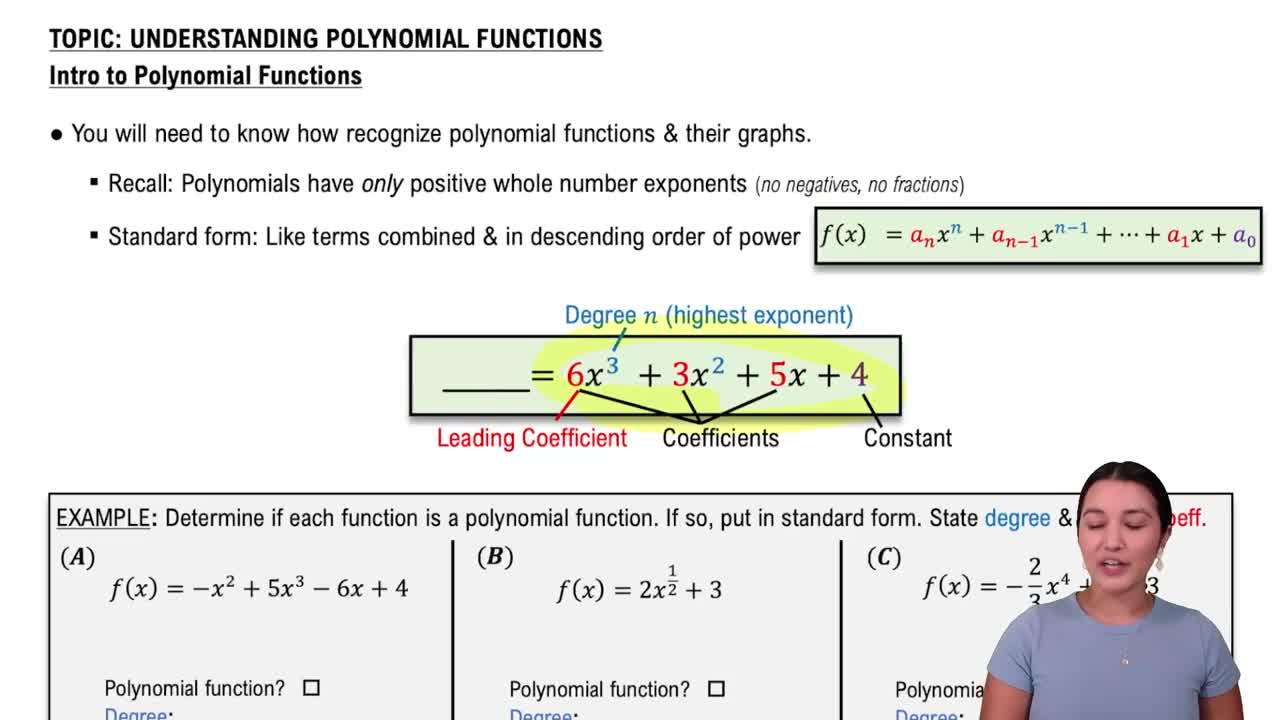Here are the essential concepts you must grasp in order to answer the question correctly.
Function Division
Function division involves creating a new function by dividing one function by another. In this case, (ƒ/g)(x) means we take the function ƒ(x) and divide it by g(x). This operation requires understanding how to manipulate algebraic expressions and the implications of division, particularly regarding the domain of the resulting function.
Recommended video:
Multiplying & Dividing Functions
Domain of a Function
The domain of a function is the set of all possible input values (x-values) for which the function is defined. For rational functions, the domain is restricted by any values that make the denominator zero, as division by zero is undefined. Therefore, when finding the domain of (ƒ/g)(x), we must identify the values of x that make g(x) equal to zero and exclude them from the domain.
Recommended video:
Domain Restrictions of Composed Functions
Polynomial Functions
Polynomial functions are expressions that consist of variables raised to non-negative integer powers and their coefficients. In this question, both ƒ(x) and g(x) are polynomial functions. Understanding their structure helps in performing operations like addition, subtraction, multiplication, and division, as well as analyzing their behavior, such as finding roots and determining the domain.
Recommended video:
Introduction to Polynomial Functions



